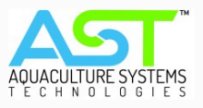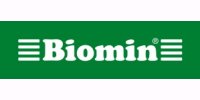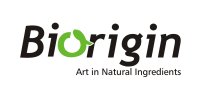World Aquaculture Magazine Author Guidelines
World Aquaculture magazine publishes two types of general articles – Feature and Short – that differ in content and length. Feature articles are 2,500 to 4,000 words in length and address multiple aspects of a broad topic area. Short articles are 1,500 to 2,000 words in length and focus on a specific topic. Both are written in the same style and format and commonly include tables and figures, including photographs.
Writing Style
Articles published in World Aquaculture must be written in plain English with the intent to convey technical information to non-specialists and the general public. Therefore, specialist jargon should be avoided and the article must be written in the everyday language familiar to readers of international news magazines such as Time and Newsweek and interpretive science publications such as Discover. World Aquaculture employs metric units of measurement exclusively.
The text must be submitted in electronic format, preferably as a Word document, attached to an e-mail message, or through a file transfer service such as Dropbox.
Photographs and Line Art
Submission of photographs and illustrations is highly encouraged and should be used to reinforce a statement graphically (short articles) or to extend the material (long articles).
- Photographs should be submitted as high-quality electronic image files, preferably in tiff or jpeg formats, with a resolution of at least 300 dpi. Images should be provided in as large a scale as possible. Photographs embedded in PowerPoint files are not suitable.
- Authors should provide no more than 12 high-resolution photographs, each numbered with a corresponding caption typed on a separate page of the article text, referencing the number on the photograph.
- The name of the photographer must be included with the caption. Photographs taken by someone other than the authors must include a written copyright release, signed by the photographer that gives World Aquaculture permission to publish the photograph.
- The author is encouraged to designate those photographs considered essential. However, editorial discretion may limit the number of photographs that accompany an article.
- Where appropriate, photographs should be cited as a figure in the text of the article. Photographs that provide background enhancement to the article do not need to be cited as figures in the text.
- Line Art in the form of diagrams, maps or graphs must be of publication quality and provided as an electronic file. All graphics must be submitted separately (not embedded in a text file). Preferable formats include EPS, TIFF or in Excel. All line art must be cited as a figure in the text of the article. All figures must contain a legend/caption provided on a separate page of the text. Depending on level of detail, Line Art prepared using PowerPoint or other presentation slide software may not be suitable as a printed illustration.
- Do not use the equation feature of Word. Type it in regular text.
Sidebars or Text Boxes
Sidebars include certain technical information judged essential to supplement the information provided in the article. A sidebar provides information in a framed box that is visually separated (highlighted) from the main text. The sidebar should be submitted as a separate Word file, which may include tables, line art and photographs. Sidebars generally provide information to the interested specialist without detracting from the main message directed to the general reader.
Tables
Presentation of large quantities of data in tabular form in articles is discouraged because it detracts from the flow of the text. Small, concise tables that complement the text are acceptable. Tables must be constructed in plain text using only tabs, with no bars, lines, grids or color. Do not use the Word table tool. Tabular material must be submitted as copy separate from the text. Carefully consider the appropriate number of significant figures for each table entry.
Notes
Immediately following the text is a section called Notes that includes author affiliations and numbered footnotes. Author affiliations should include name, address, organizational affiliation, and electronic mail address of at least the corresponding author and any or all of the other authors.
References
Citations need not be extensive and should be limited to recent reviews or overviews of pertinent fields. Literature citations in articles follow the same format used for the Journal of the World Aquaculture Society. In the text, cite literature in the familiar author-year format (Marks and Jones 1992). At the end of the article, in a References section, list literature citations alphabetically and chronologically following the examples provided. Only literature cited in the text should be listed in the Reference Section.
Do not list personal communications in the text or in the References section; these should be listed as numbered notes in the Notes section. Journal titles must be spelled out, not abbreviated.
Examples:
Journal Article:
Lois, 0.J. and A.C. Ponie. 1993. Control of reproduction of the shrimp Penaeus keratherus held in captivity. Journal of the World of Aquaculture Society 24:31-39.
Book:
Boyd, C. E. 1982. Water Quality Management for Pond Fish Culture. Elsevier Scientific Publishing Company, Amsterdam. The Netherlands.
Stickney, R.R., editor. 1986. Culture of Nonsalmonid Freshwater Fishes. CRC Press, Inc. Boca Raton, Florida, USA.
Article or Chapter in Book:
Ward P.D. 1982. The development of bacterial vaccines for fish. Pages 47-58 In R.J.Roberts, editor. Microbial Diseases of Fish. Academic Press, New York, New York. USA.
Submission
Submit all electronic files associated with an article to:
Greg Lutz, Editor in Chief
glutz@agcenter.lsu.edu
















